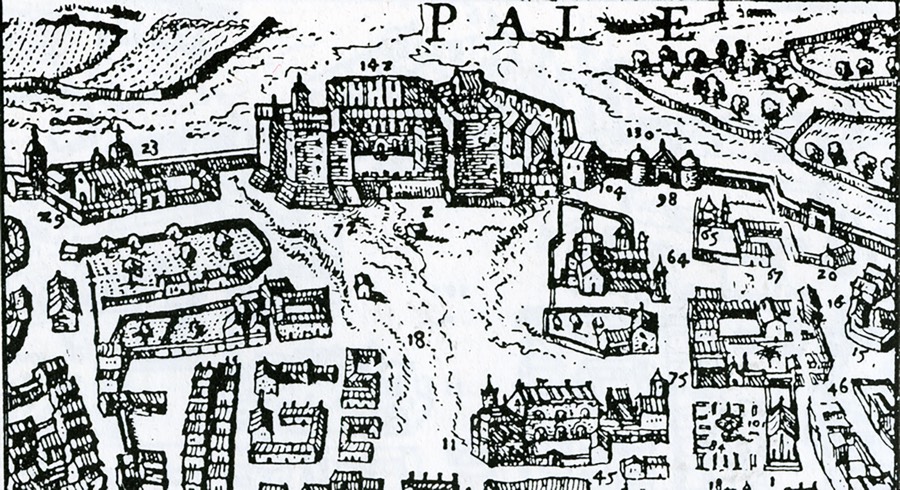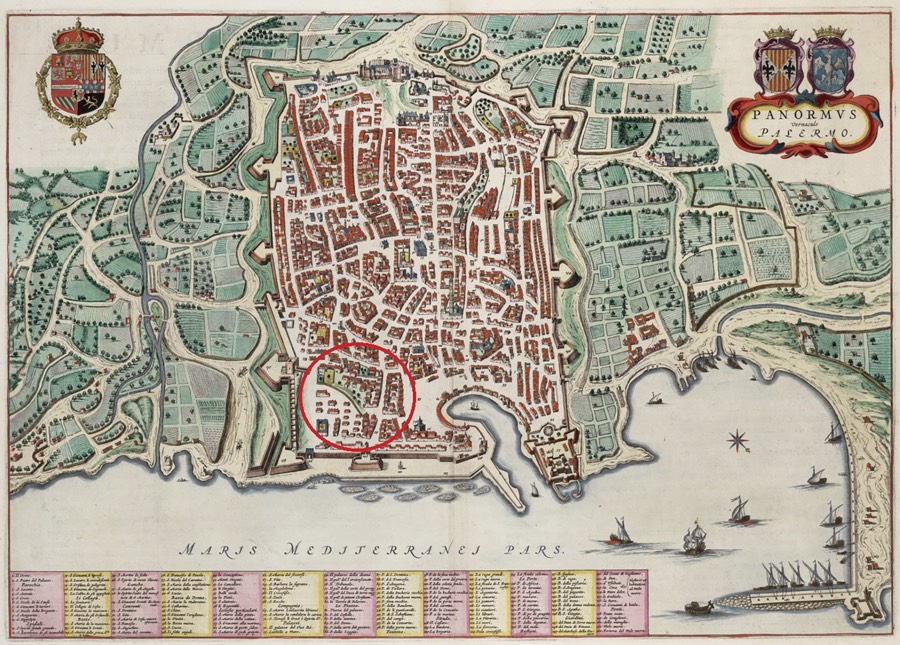In the oldest part of the city, now the Cassaro, stands the Qasr, from the Arabic word for Palace or Castle.  Already present in Roman times, it was rebuilt in Arab times and then transformed by the Normans into the symbol par excellence of monarchical power. In the Muslim era, it was the residence of the Arab emirs, who from 937 moved to the fortified citadel in today’s Kalsa district, near the port.
Already present in Roman times, it was rebuilt in Arab times and then transformed by the Normans into the symbol par excellence of monarchical power. In the Muslim era, it was the residence of the Arab emirs, who from 937 moved to the fortified citadel in today’s Kalsa district, near the port. The Qasr was connected to the grandiose
Gami Mosque
The Qasr was connected to the grandiose
Gami Mosque
, located in the area where the first Byzantine core of the present Cathedral stood, near the Punic-Roman walls.
The mosque, adapted by the Aghlabid dynasty and opened for worship on Fridays, was a building of considerable size which, according to the chronicles of the time written by the Arab historians and travellers
Ibn Hawqal
and
Al Idrisi
, could accommodate over seven thousand people. During the Muslim rule, the Greek episcopal tradition was kept alive thanks to the bishop of Palermo,
Nicodemus
, who was based in the church of
Santa Domenica Ciriaca
, in the territories of Monreale. When the Normans conquered Sicily, thanks to the work of the
Great Count Roger I
who, together with his brother
Robert Guiscard
, devised a complex plan that began with the 1061 landing in Messina, they decided to settle once again in the Cassaro.
This was undoubtedly due to its elevated position, between the depressions of the Kemonia and Papireto rivers, which, at the time, delimited the central part of the ancient city. The Cassaro regained its former prerogative as a place of political and religious representation, as the Emir’s palace became the seat of the nascent Norman monarchy and a symbol of the centralisation of power.
Bishop Nicodemus was brought back to the city to convert the great mosque into a church for Christian worship. The basilica has been serving Christian worship since 1072. The Norman reconstruction of the building, which began in 1169, is the work of Archbishop
Gualtiero Offamilio
. The Cathedral was dedicated to
Mary the Blessed Virgin of the Assumption
in 1185.